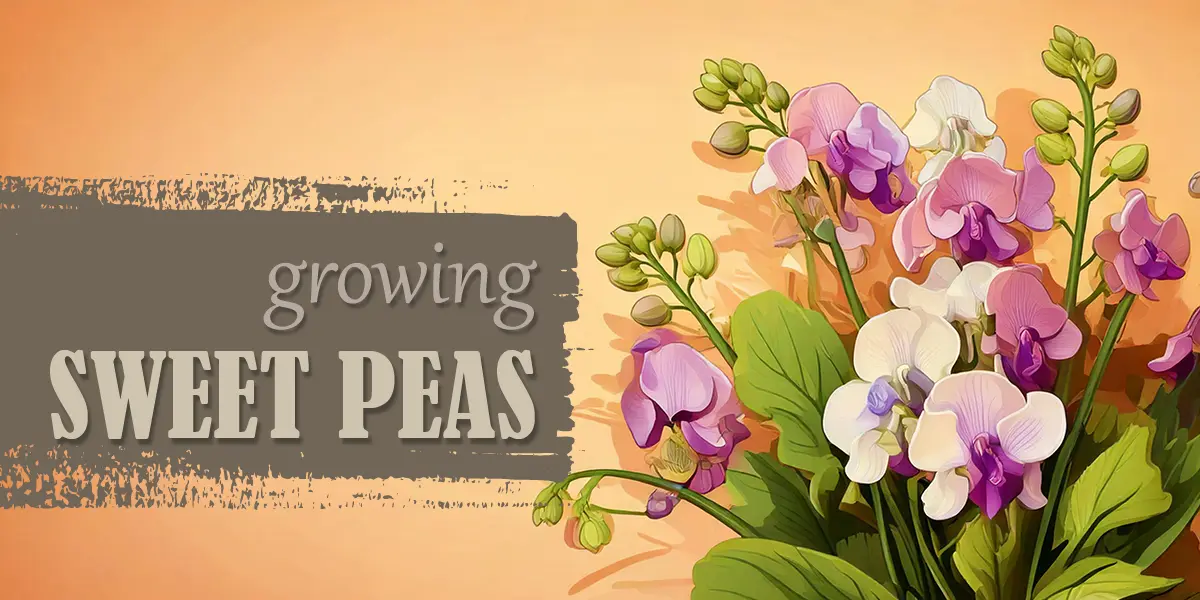Sweet peas (Lathyrus odoratus) were first cultivated in Sicily for their sweet fragrance and butterfly-like flowers in hues of white, pink, red, violet, and purple (among others).
Introduced to England in the late 17th century, these climbing annuals later became a staple in Victorian gardens.
Today, their popularity spans the globe; gardeners grow them for their scent, aesthetic appeal, and ability to attract pollinators.
Sweet peas complete their life cycle within one season. They sprout, grow, flower, and produce seeds before dying off in the winter. However, in milder climates like Los Angeles, they can sometimes behave as short-lived perennials and reappear the following year.
Why Grow Sweet Peas?
- Their unmistakable, sweet aroma adds sensory enjoyment to gardens and indoor arrangements.
- Sweet peas naturally attract bees and other beneficial pollinators, encouraging biodiversity.
- They produce an abundance of nectar, a natural sweetener for hummingbirds.
- Sweet peas are easy to cultivate and make excellent companion plants for vegetables like tomatoes, beans, and carrots. Their roots fix nitrogen in the soil, feeding nearby edible plants.
- You can grow them in containers, train them to climb trellises, or allow them to scramble up other plants.
- They bloom in late spring and early summer, adding color and interest to the garden when many other plants are still dormant.
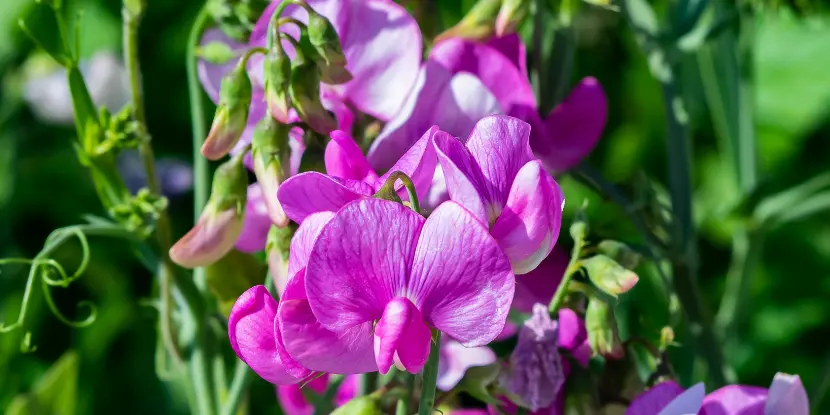
Wild sweet pea flowers along a river.
Best Sweet Pea Varieties for Los Angeles
Sweet peas have been cultivated for centuries, resulting in hundreds of varieties developed for different purposes.
Growers often classify them into major groups based on traits like bloom size, fragrance, and growth habits. Here are a few varieties that do well in Southern California,
- Cupani’s Original: This heirloom variety with deep purple and maroon blooms loves sunny conditions.
- Mammoth Blend: A mix of vibrant colors, perfect for covering fences or trellises.
- April in Paris: Has elegant cream-and-lavender flowers with a strong fragrance. Thrives in beach areas and cooler parts of Los Angeles.
- Spencer Mix: Bears large, ruffled blooms in assorted colors; great for cutting gardens and floral displays.
- Old Spice Mix: Heat-tolerant, these heritage blooms are well-adapted for summer in LA.
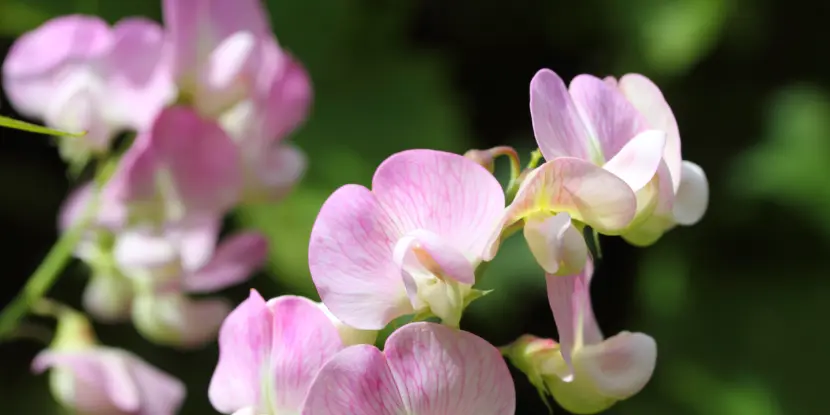
The Everlasting Sweet Pea variety in bloom.
Ideal Growing Conditions for Sweet Peas
Light
- Sweet peas grow best in full sun; aim for 6–8 hours of sunlight daily.
- If you live in a particularly hot area of Los Angeles, some afternoon shade can prevent the plants from overheating.
Temperature
- Sweet peas prefer cooler temperatures for germination and early growth.
- In Los Angeles, plant them in late fall or early winter to take advantage of the cooler months.
Soil
- Use rich, well-draining, slightly alkaline soil (pH between 7–8).
- Mix in compost or aged manure before planting to boost nutrient levels and improve soil structure.
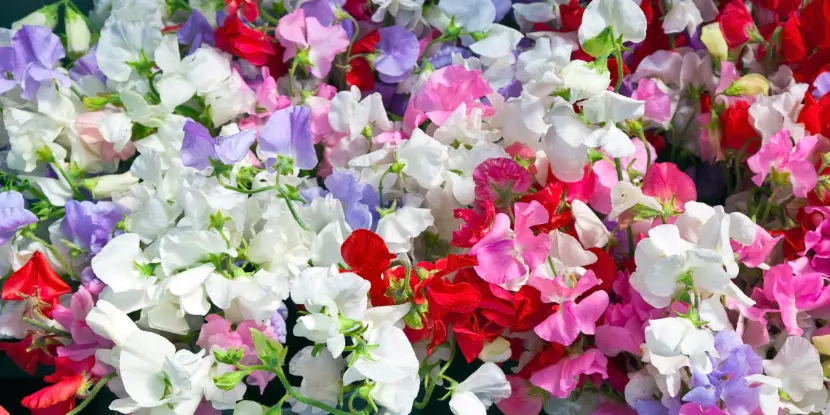
Sweet peas grow in a range of colors, including white, pink, red, and purple.
Steps for Planting Sweet Peas
1. Choose Your Spot
Select a sunny area with well-drained soil, or prepare containers with quality potting mix.
2. Prepare the Seeds
Sweet peas have a hard seed coat, making germination easier if you scarify (lightly nick) or soak them overnight in water.
3. Plant the Seeds
- Dig small trenches or holes about 1 inch deep and 2–3 inches apart.
- Drop seeds into the holes and cover lightly with soil.
4. Water Immediately
Water thoroughly right after planting. Keep the soil moist as the seeds germinate, but avoid waterlogging.
5. Add Support Structures
Install trellises, fences, or stakes at the time of planting. Sweet peas are natural climbers and will need vertical support for optimal growth.
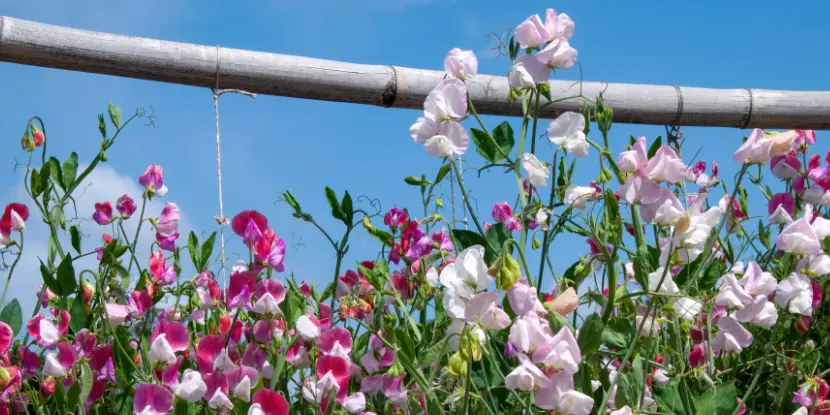
Sweet peas are climbing plants. Give them a trellis or other support structure.
Caring for Sweet Peas
Water
- Water regularly to maintain evenly moist soil, especially during dry spells.
- Avoid overwatering. Ensure your garden beds or pots have good drainage.
Fertilizer
- Use a high-quality phosphorus-rich fertilizer to encourage blooming.
- Avoid excessive nitrogen, which promotes leafy growth over flowers.
- Fertilize about once a month for best results.
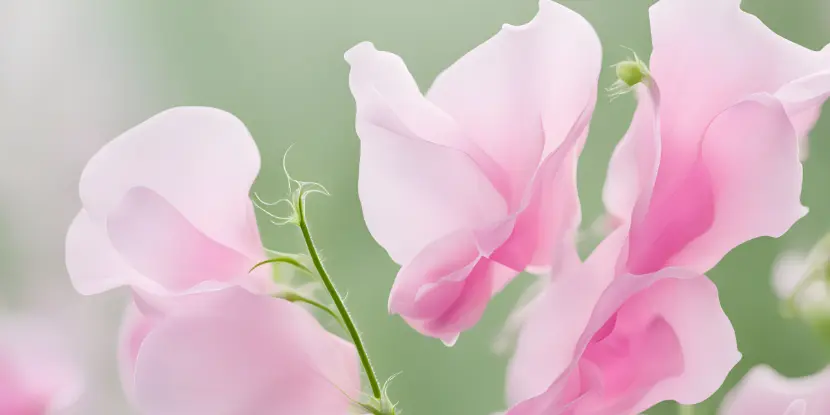
Pink sweet pea flowers with delicate petals and tendrils.
Pests & Diseases
- Watch out for common pests like aphids, spider mites, and slugs. Treat infestations early with insecticidal soap or neem oil.
- Water at the base and provide ample air circulation between plants to prevent fungal diseases (e.g., powdery mildew).
Sweet Peas in Cut Flower Arrangements
- Harvest blooms in the morning or evening when it’s cooler.
- Remove flowers with long stems and old, fading petals to encourage continued blooming.
- Sweet peas last up to a week in vases. Keep their water clean, change it every other day, and remove fallen leaves or debris from the vase.
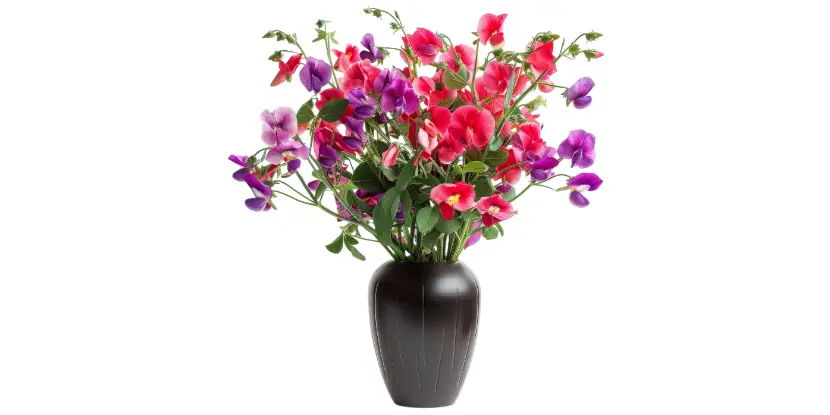
Sweet peas in a floral arrangement.
Sweet Peas as Companion Plants
- Train sweet peas to grow up trellises or through other plants for added beauty and floral interest.
- Their nitrogen-fixing roots make them excellent companions in vegetable gardens; plant them near beans, tomatoes, and carrots.
- Sweet peas can also act as a living mulch, suppressing weeds while adding nutrients to the soil.
FAQs: Growing Sweet Peas
Q: Can I grow sweet peas in containers?
Sweet peas adapt well to containers. Just ensure the pot is at least 10 inches deep and equipped with a sturdy trellis for climbing.
Q: How long do sweet peas take to bloom?
Sweet peas start blooming around 90–120 days after planting, depending on the variety and growing conditions.
Q: Are sweet peas edible?
No, sweet pea seeds and pods are toxic if ingested, unlike edible garden peas (Pisum sativum).
Q: When should I cut back sweet peas?
Deadhead spent flowers regularly to encourage continuous blooming. Cut the plants down and compost them at the end of their growing season.
Q: How do I prevent sweet peas from wilting in hot weather?
Sweet peas prefer cooler temperatures, so if you’re growing them in a hot area, provide afternoon shade, mulch the soil to retain moisture, and water consistently to keep the roots cool.
Q: What are the signs of overwatering sweet peas?
Overwatered sweet peas may show yellowing leaves, wilting, or stunted growth. Ensure your soil or pots have good drainage, and allow the topsoil to dry slightly between waterings.
Q: Do sweet peas come back every year?
Sweet peas are typically grown as annuals, meaning they complete their lifecycle in one growing season. However, some perennial varieties can return year after year if properly cared for.
Q: Can I save seeds from my sweet peas for next season?
You can save sweet pea seeds by allowing some pods to mature and dry on the plant. Once dried, harvest the pods, remove the seeds, and store them in a cool, dry place for the next planting season. Be aware that hybrid varieties may not produce true-to-type plants from saved seeds.

